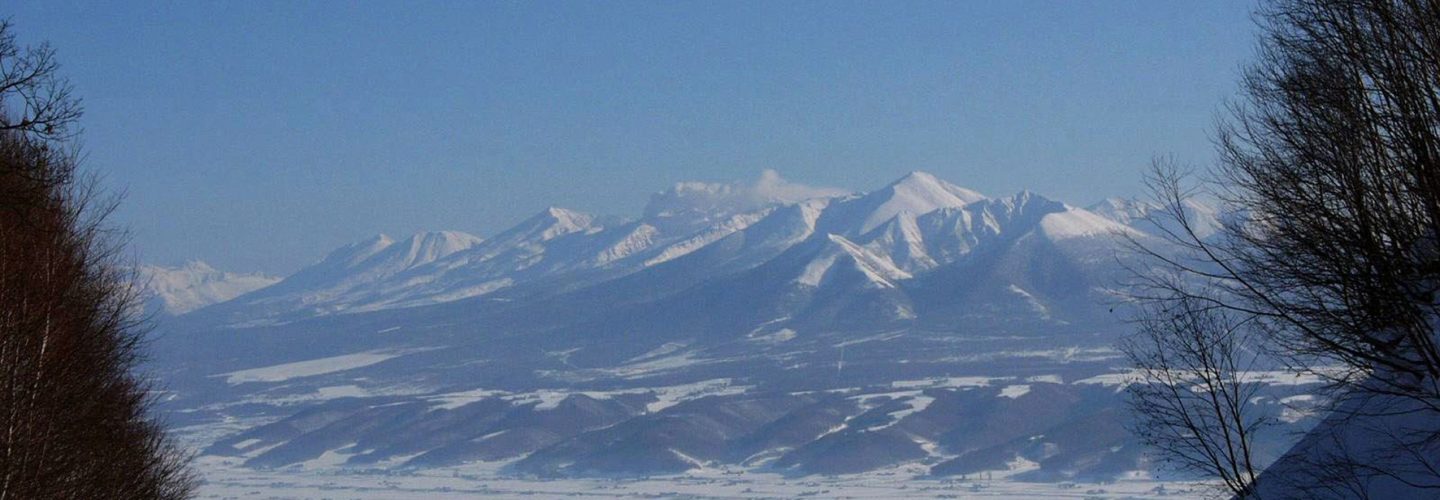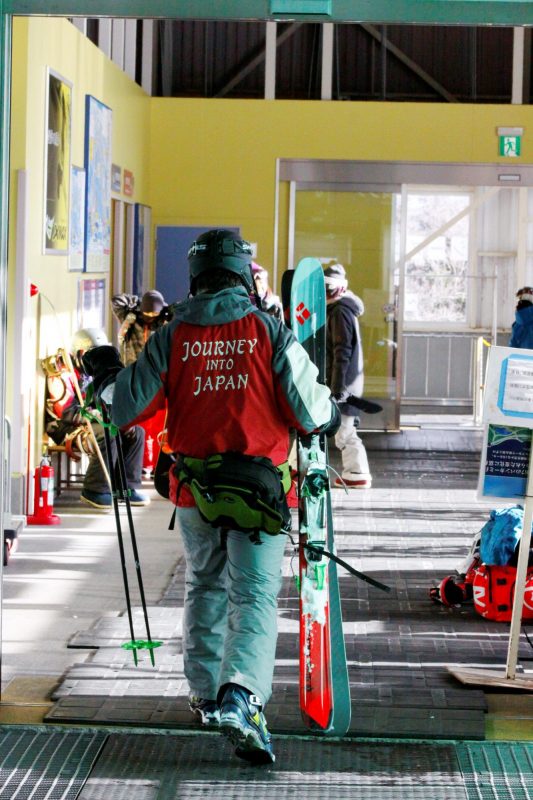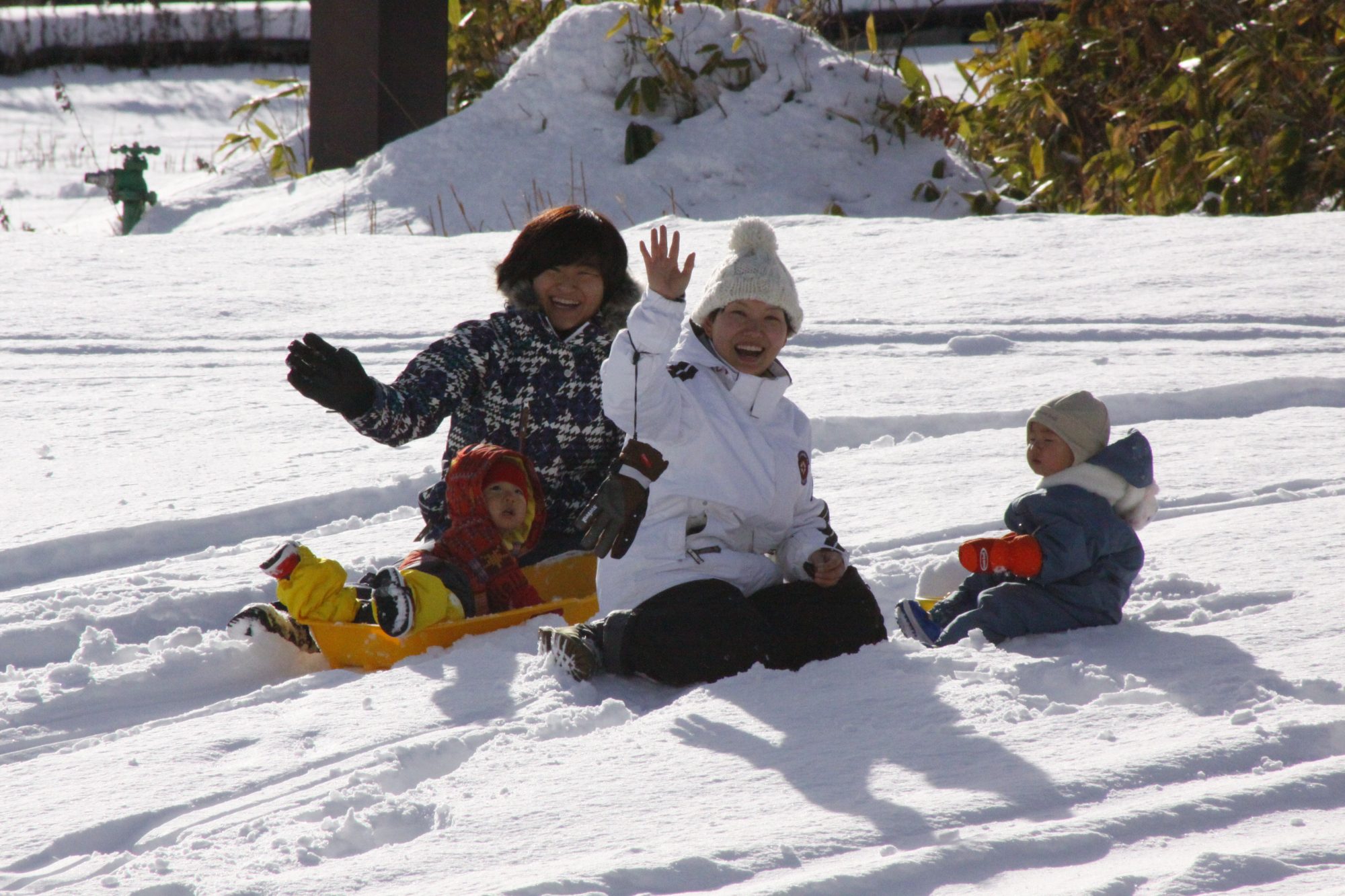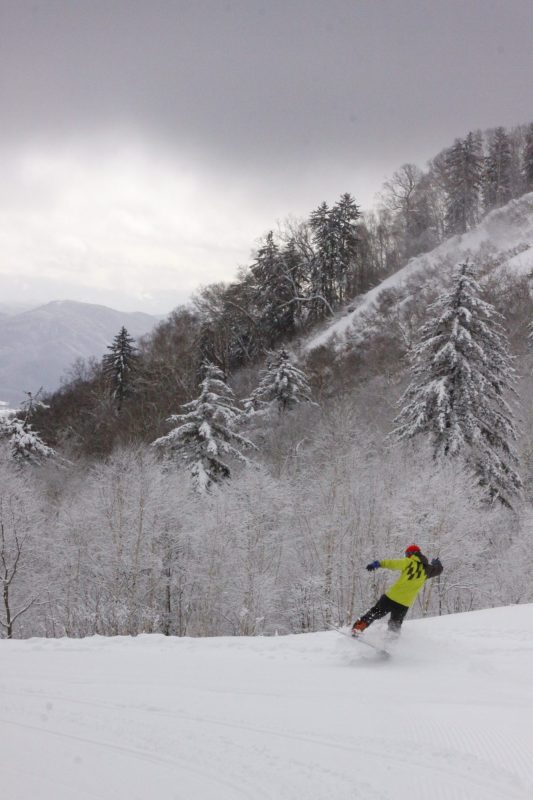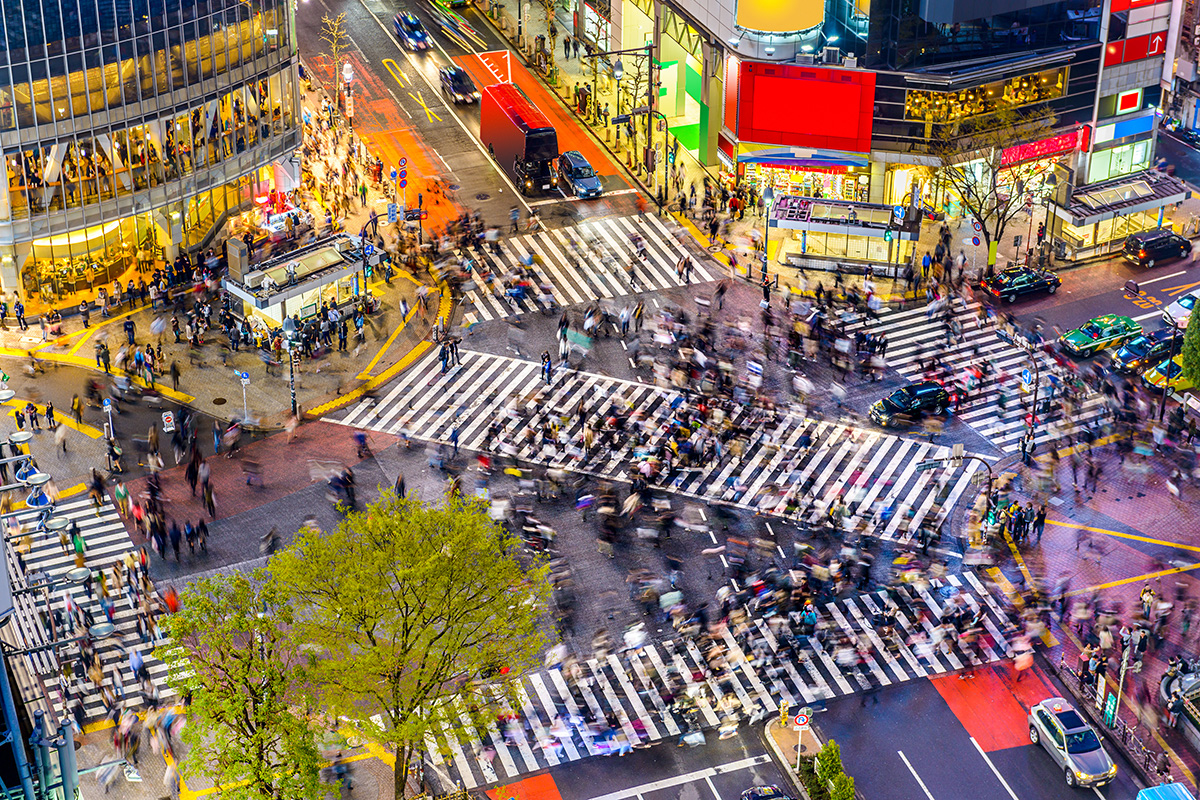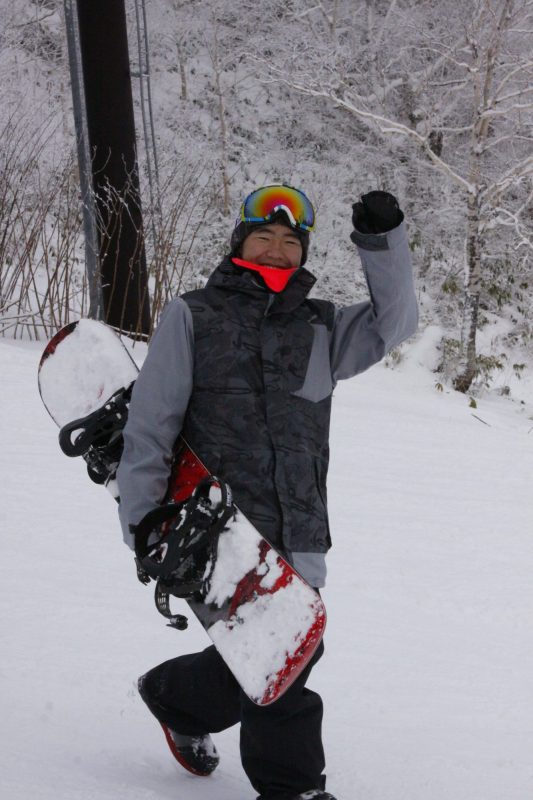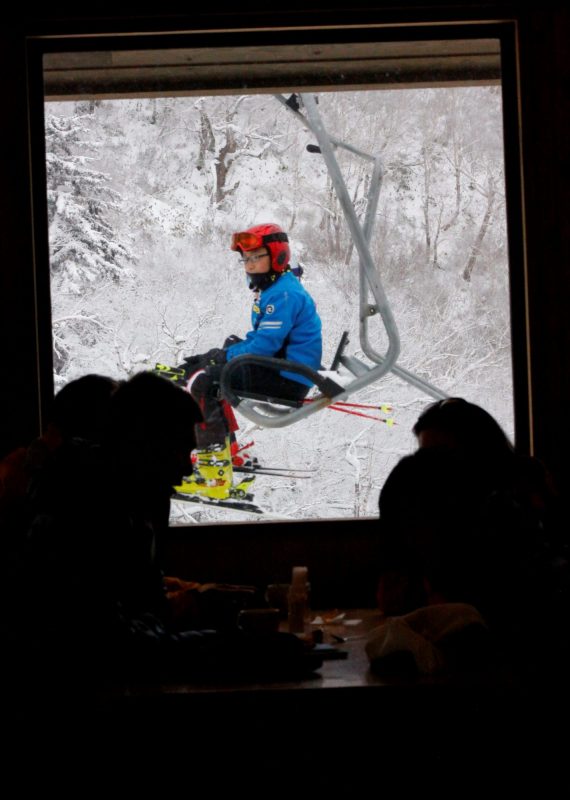Ski holidays to Japan are not the novelty they once were. Back in the 1980s and ‘90s almost no one from outside the country skied there, then prices dropped and the Australians who had a long haul to Canada to ski each winter found Japan was closer and had amazing empty powder slopes, the rest is ski holiday history.
For Brits Japan has gained ground more recently as we’ve realised it’s hardly any further to get to than North America, often now costs less, and the language barriers are being broken down.
The powder snow for which Japan’s ski slopes are famous is a big draw and most of the ski journalists heading over there to write about are there for the powder. The thing is though, even if you’re some kind of skiing weirdo that’s not actually that bothered about skiing light, deep powder every day (can you imagine that?) and just likes to blast down the slopes, Japan is worth the trip.
There are actually hundreds of fantastic, unspoilt ski areas across Japan, with many of the best on the northern island of Hokkaido, which give you a much more authentic experience, as well as a friendly welcome, great service and usually at lower-than-Europe-or-North-America prices.
You can enjoy traditional Japanese food, accommodation, onsen hot spring baths along with mostly empty ski slopes, and altogether you’ll enjoy a refreshingly different ski holiday experience to the Alps.
I flew out to Tokyo last winter aiming to tour some ski areas on the northern island of Hokkaido. This is not the same island as Tokyo is on, to which you can fly direct from London. It’s usually a second flight required up to the city (and former Winter Olympics host) of Sapporo in Hokkaido, although if you have time a spectacular new bullet train bridge has recently opened linking the two islands so you can opt to go over land and sea from Tokyo.
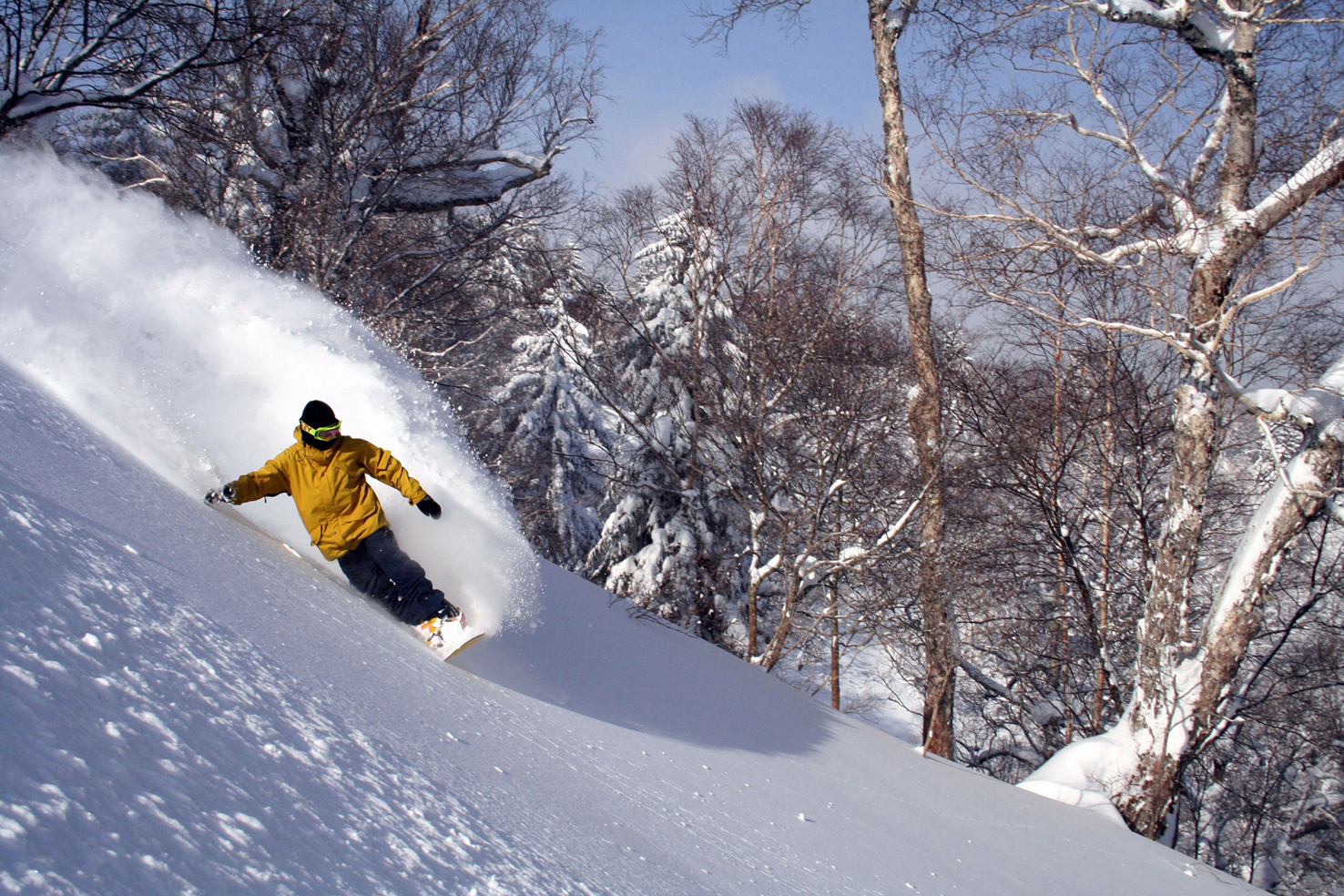
© Furano Tourism Association
Sahoro
After an all too fast 24 hours in Tokyo adjusting to the time difference (10 hour ahead of GMT) I flew north to Hokkaido, Japan’s powder ski island, flying in to the city of Sapporo and it’s ultra-modern New Chitose Airport.
From here I headed straight to my first ski resort stop, Sahoro, two and a half hours north. This is a modern and well-designed hotel that is very unusual amongst the hundreds of Japanese ski areas in that it was first developed by the then French-owned (now Chinese owned) Club Med group in the 1980s …in other words before most other international ski businesses moved to Japan. Until recently it was the only Club Med in the country.
As such it has long been one of the most multi-ethnic spots in Japan with English language instruction available so it was indeed a good choice for starting a tour of Japanese ski areas, knowing that soon enough I’d be in ski villages with little English spoken, and unintelligible signage!
The 165 room hotel here is also ‘Western Style’ which again is not the case when you move in to more Japanese run resorts.
Known for its sunny days, quiet slopes and views out across the Tokachi Plains, Sahoro is really the perfect family resort, especially with all the Club Med facilities. At 610km it doesn’t have a large vertical drop but it does have plenty of terrain with 17 runs, the longest, North Avenue, a 3km descent, all served by a gondola and 7 chairs.
It’s worth noting that as is typical in Japan a ski pass here is at the lower end of what you might pay in the Alps, with a day ticket coming in at around £30. Other in-resort expenses feel good value too and there are three restaurants to choose from themed as French (well it is Club Med), Japanese and Izakaya.
Furano
For those in the know in the ski world Furano has a worldwide reputation as one of Japan’s leading resorts. Among other things it claims to receive the lightest and driest powder in Japan with an average of an incredible 11 metres of it falling each winter.
Marketed as an ideal destination for families it offers a quieter more relaxed atmosphere than some other resorts with perfectly groomed runs for beginners and intermediates; plus some steep terrain (World Cup racing is regularly staged here) and off piste powder available to more advanced skiers. There’s a gondola lift again and 12 more lifts serving it all.
The resort is run by the huge Prince Hotel chain which runs many of the big ski resorts in Japan (it runs 42 hotels in the country and seven more abroad), but also has a genuine mountain town base 10 minutes’ drive from the slopes. Here Ninguru Terrace is worth a look as it has a beautiful collection of boutique cottages, housing specialty arts and crafts along with their creators.
Slopeside accommodation is provided by the huge 407 guest room Prince Hotel which has several restaurants with spectacular mountain views plus in-hotel ski rental and retail shops
Kamui Ski Links
Next stop was Kamui Ski Links, one of Hokkaido’s best little ski areas, located 30 minutes drive from Asahikawa City and convenient for day trips from Furano or even Sapporo. The ski area has a gondola and five chairs but interestingly the gondola is one of the lowest in the ski world, running between the 150m altitude base and the 750m highest lift point. So the resort tops out much lower than most resorts in the alps begin!
None-the-less Kamui gets over eight metres of Central Hokkaido’s perfect powder snow and is blessed with a huge amount of blue sky days. So that’s more snow than most resorts in the alps can claim, despite that low altitude. Not many could claim they only charge £20 a day for a lift pass either.
Sapporo Kokusai
Next stop, Sapporo Kokusai, is perhaps most famous for the amazing views from the summit of the gondola lift – An attraction for skiers and non-skiers alike. From here there are breath-taking panoramic views of Otaru city and the Sea of Japan on sunny days.
Sunny days can be an issue though as the resort is also known for the abundance of its fine powder snow on its wide slopes, with a season the lasts from mid-November to early May. Every type of skier is catered for here with slopes for all standards and a kids’ snow play area with sledding and tubing and its located just 90 minutes from downtown Sapporo city.
Sapporo Teine
Even closer to Sapporo, and made up of two formerly separate areas, Highland and Olympia, linked by a fast-modern gondola, Sapporo Teine caters both for beginners wanting to learn their turns as well as die hard day-tripping powder hounds from the city looking for lines that are steep, deep and cheap! It’s open for night skiing too if they arrive late in the day. Unusually there’s less intermediate terrain here, it’s either easy or challenging!
Olympia was the site of the bobsled competition for the 1972 Sapporo Olympic Games and is still home to the old Olympic flame tower.
Highland, at 1,000 metres above sea level, one the other hand offers spectacular views of Sapporo and the ocean and the Highland Zone features some of the steepest in-bounds terrain in Japan, with one of the steep pitches used for the Olympic GS course. A fast quad chair with pull down covers services the full vertical of Highland.
Sapporo Prince Hotel
Before heading back to the UK with flights from Sapporo back to Tokyo I spent my final night in Japan at the Sapporo Prince Hotel which features an open-air hot springs bath and restaurants with a rich variety of seasonal produce. I also went to the amazing annual snow festival there with huge ice sculptures lit with laser light shows and with accompanying massive, it was really impressive.
Tokyo Stopover
It’s well worth spending a few days in Tokyo on your outward or return trip if you have time.
Tokyo is a vast and incredible city with many different districts, all of them noticeable clean. The first major challenge I faced on arrival was working out how the understand train system worked and make sense of the crazy looking underground map. Fortunately if you stand still long enough looking confused someone will stop and try to help.
Once you have even begun to get to grips with getting about there are too many attractions to name but some of the highlights include the huge Imperial Palace area and parkland and Sensō-ji, an ancient Buddhist temple that has become a symbol of Tokyo’s past and at the other extreme the Tokyo Skytree, an observation tower which provides amazing panoramic views of the capital.
In modern Tokyo Kabukichō is the best known area for restaurants and bars whilst Nishi-Shinjuku is “Skyscraper City” and Omoide Yokocho is famous for its eateries serving up traditional ramen (egg noodles in a salty broth), soba (long, thin buckwheat noodles) and other traditional favourites. For souvenirs or cutting-edge fashion visit Harajuku before walking down to Shibuya, home to the world’s busiest pedestrian crossing – an experience not to be missed!
What I learned from my brief stay was that Tokyo, or at least not all of Tokyo, is as hi-tec as you might expect, there are very old and very new sections as it constantly news itself. Also, the markets are incredible.
The Japan Ski Holiday Experience
I visited mainly smaller resorts which you probably wouldn’t suddenly decide to head to for a week’s holiday from the UK, but they work well as a multi-stop tour, and are very affordable too. I found lots of lovely powdery gentle tree skiing in among beautiful silver birch trees at pretty much every ski area with some great slope side restaurants with wonderful food at very good prices.
It was very, very different to the Alps, with a different kind of magnificent views and extreme snowfalls (it snowed most days of the trip and seeing a plane land in deep snow was quite spectacular).
The hotels tended to have huge dining halls that could probably seat a few hundred at least and the food was mainly Japanese which I loved but for some might be a problem. Then again, everything was available from a vending machine from snacks and drinks to full blown sushi, stir fry and curry.
Many of the hotels in these resorts were fairly old fashioned by western standards, with plenty of avocado bath suites and the like, but once you got used to that, it was ok. The onsen (hot spring) baths with public nakedness were everywhere, like saunas in Scandinavia, and (again like saunas in Scandinavia) was not very British but when in Rome… or Hokkaido… it was certainly past of the experience.
Finally, the magnificent view of Mount Fuji whilst sitting in the airport lounge is something I’ll never forget.
All in all if you really want a total change in culture when skiing Japan really is your perfect destination..
Featured Image © Furano Tourism Association
